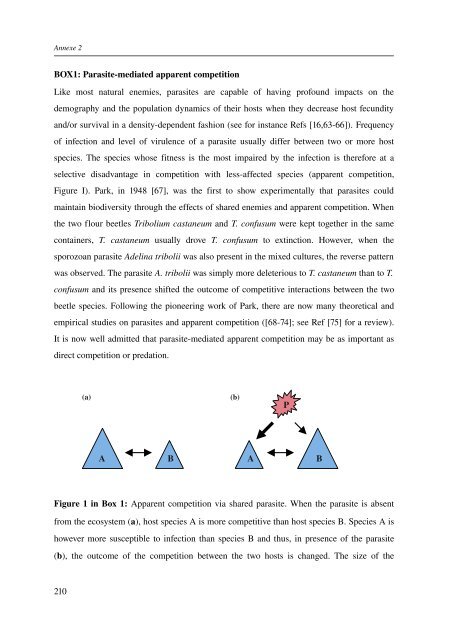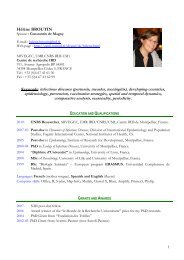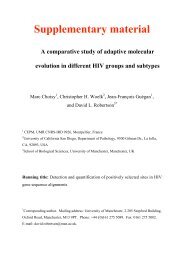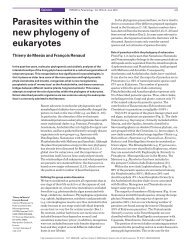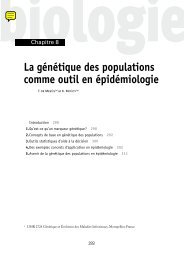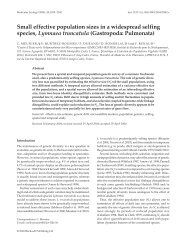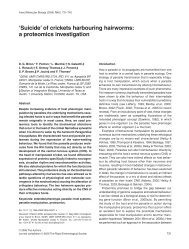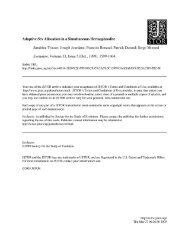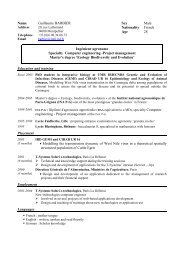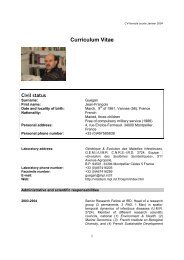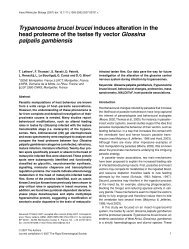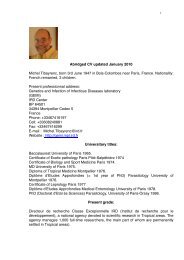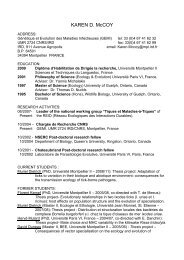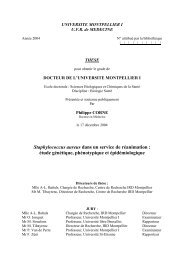écologie des virus influenza aviaires en Camargue - IRD
écologie des virus influenza aviaires en Camargue - IRD
écologie des virus influenza aviaires en Camargue - IRD
Create successful ePaper yourself
Turn your PDF publications into a flip-book with our unique Google optimized e-Paper software.
Annexe 2BOX1: Parasitemediated appar<strong>en</strong>t competitionLike most natural <strong>en</strong>emies, parasites are capable of having profound impacts on thedemography and the population dynamics of their hosts wh<strong>en</strong> they decrease host fecundityand/or survival in a d<strong>en</strong>sitydep<strong>en</strong>d<strong>en</strong>t fashion (see for instance Refs [16,6366]). Frequ<strong>en</strong>cyof infection and level of virul<strong>en</strong>ce of a parasite usually differ betwe<strong>en</strong> two or more hostspecies. The species whose fitness is the most impaired by the infection is therefore at aselective disadvantage in competition with lessaffected species (appar<strong>en</strong>t competition,Figure I). Park, in 1948 [67], was the first to show experim<strong>en</strong>tally that parasites couldmaintain biodiversity through the effects of shared <strong>en</strong>emies and appar<strong>en</strong>t competition. Wh<strong>en</strong>the two flour beetles Tribolium castaneum and T. confusum were kept together in the samecontainers, T. castaneum usually drove T. confusum to extinction. However, wh<strong>en</strong> thesporozoan parasite Adelina tribolii was also pres<strong>en</strong>t in the mixed cultures, the reverse patternwas observed. The parasite A. tribolii was simply more deleterious to T. castaneum than to T.confusum and its pres<strong>en</strong>ce shifted the outcome of competitive interactions betwe<strong>en</strong> the twobeetle species. Following the pioneering work of Park, there are now many theoretical andempirical studies on parasites and appar<strong>en</strong>t competition ([6874]; see Ref [75] for a review).It is now well admitted that parasitemediated appar<strong>en</strong>t competition may be as important asdirect competition or predation.(a)(b)PA B A BFigure 1 in Box 1: Appar<strong>en</strong>t competition via shared parasite. Wh<strong>en</strong> the parasite is abs<strong>en</strong>tfrom the ecosystem (a), host species A is more competitive than host species B. Species A ishowever more susceptible to infection than species B and thus, in pres<strong>en</strong>ce of the parasite(b), the outcome of the competition betwe<strong>en</strong> the two hosts is changed. The size of the210


